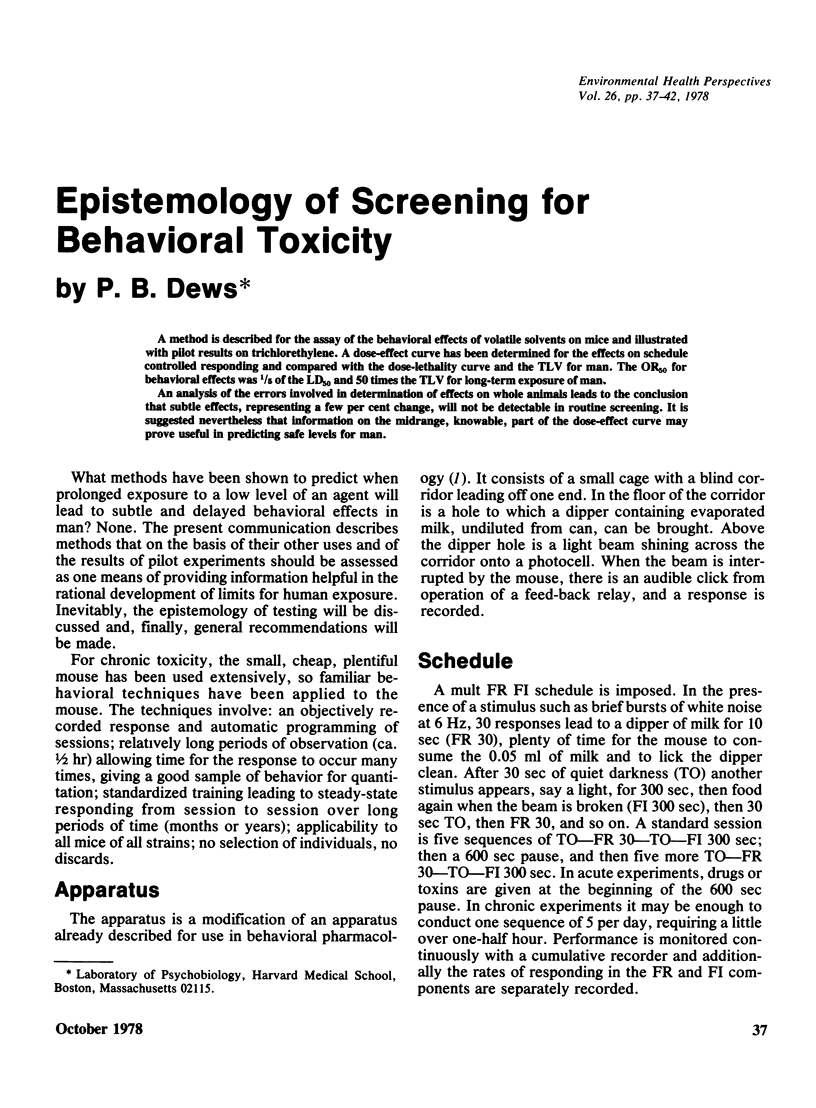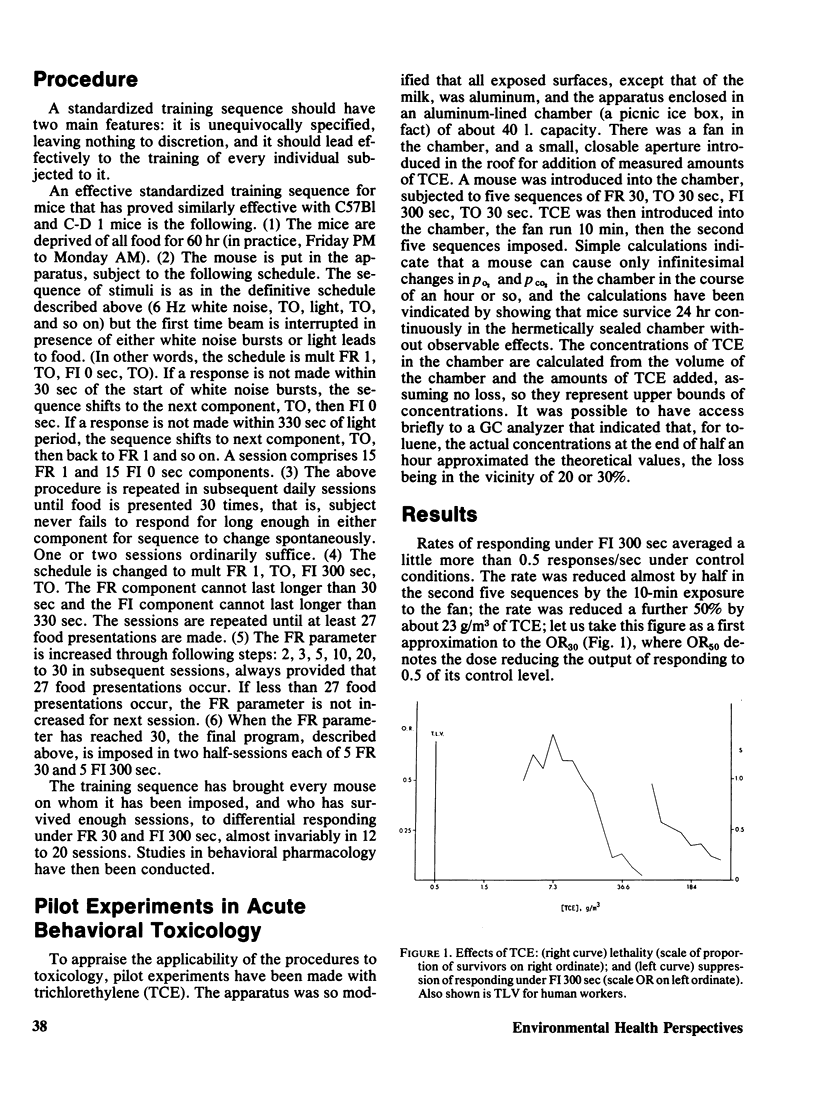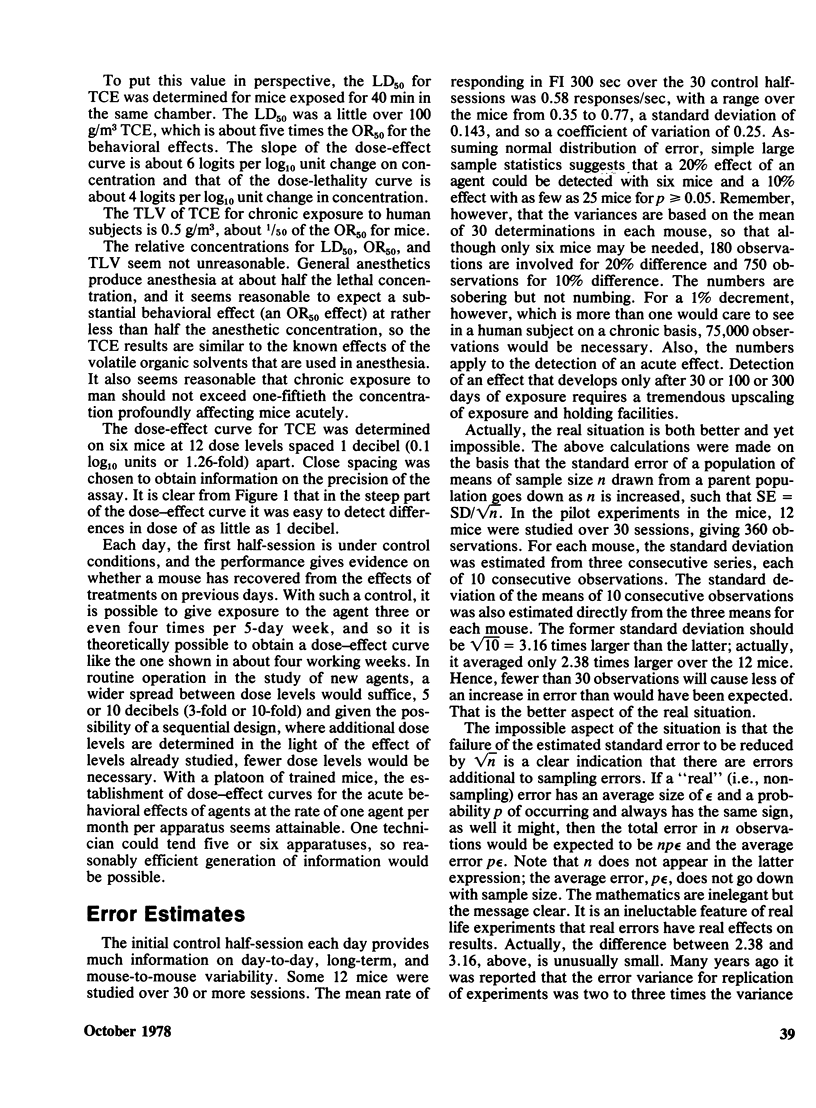Abstract
A method is described for the assay of the behavioral effects of volatile solvents on mice and illustrated with pilot results on trichlorethylene. A dose-effect curve has been determined for the effects on schedule controlled responding and compared with the dose-lethality curve and the TLV for man. The OR50 for behavioral effects was 1/5 of the LD50 and 50 times the TLV for long-term exposure of man. An analysis of the errors involved in determination of effects on whole animals leads to the conclusion that subtle effects, representing a few per cent change, will not be detectable in routine screening. It is suggested nevertheless that information on the midrange, knowable, part of the dose-effect curve may prove useful in predicting safe levels for man.
Full text
PDF





Selected References
These references are in PubMed. This may not be the complete list of references from this article.
- Schneiderman M. A., Mantel N., Brown C. C. From mouse to man--or how to get from the laboratory to Park Avenue and 59th Street. Ann N Y Acad Sci. 1975 Jan 31;246:237–248. doi: 10.1111/j.1749-6632.1975.tb51098.x. [DOI] [PubMed] [Google Scholar]
- Wenger G. R., Dews P. B. The effects of phencyclidine, ketamine, delta-amphetamine and pentobarbital on schedule-controlled behavior in the mouse. J Pharmacol Exp Ther. 1976 Mar;196(3):616–624. [PubMed] [Google Scholar]


